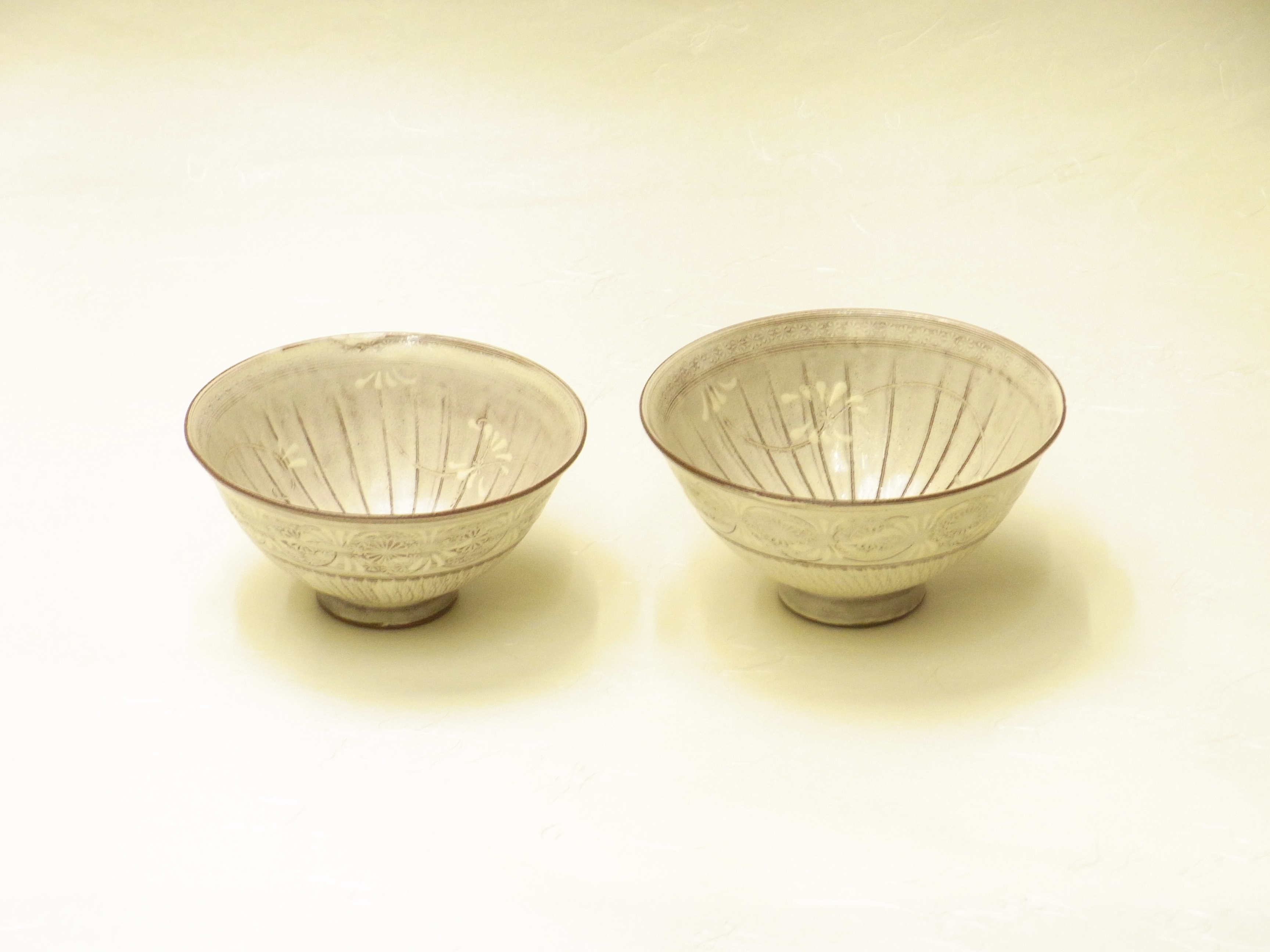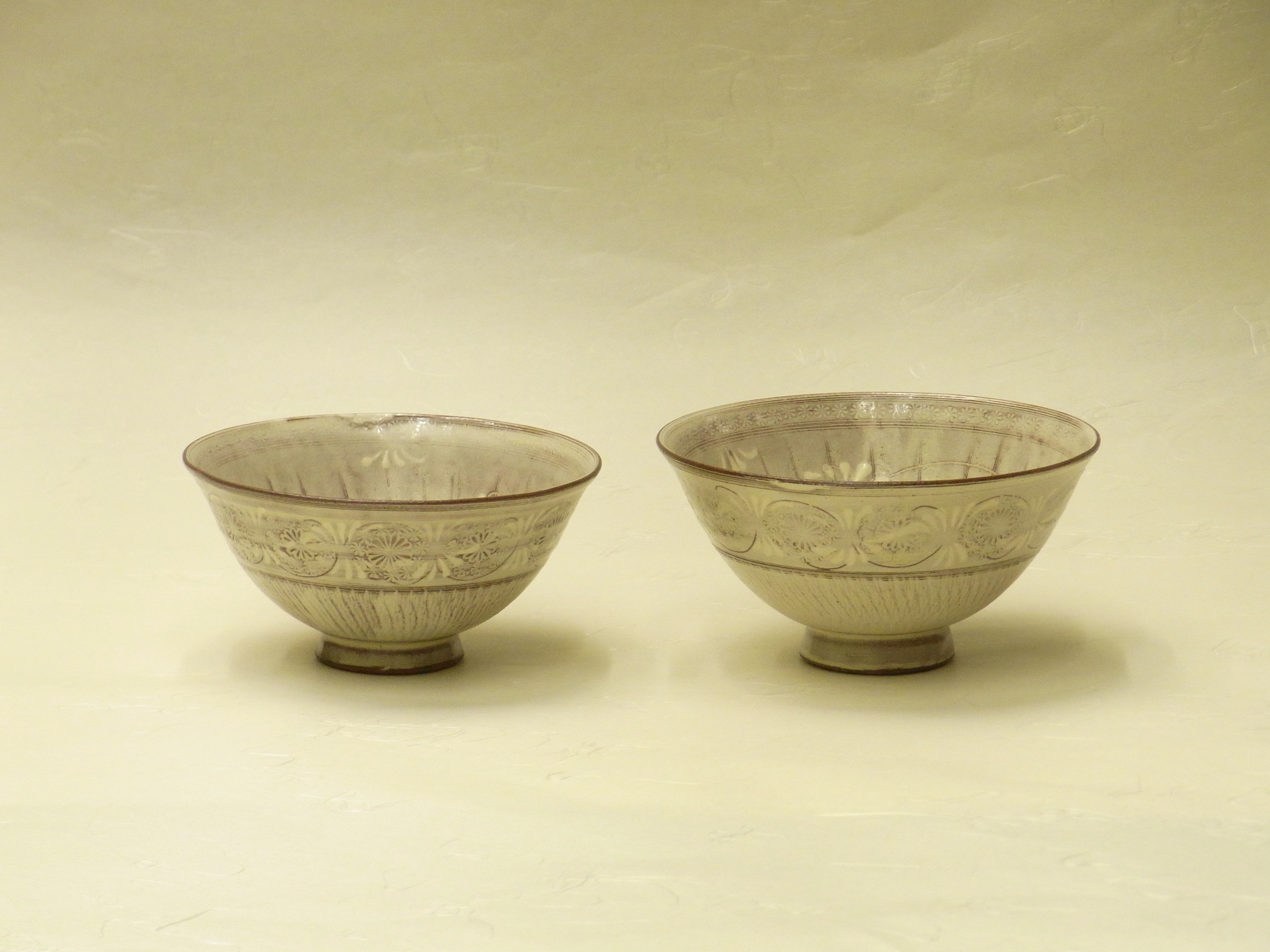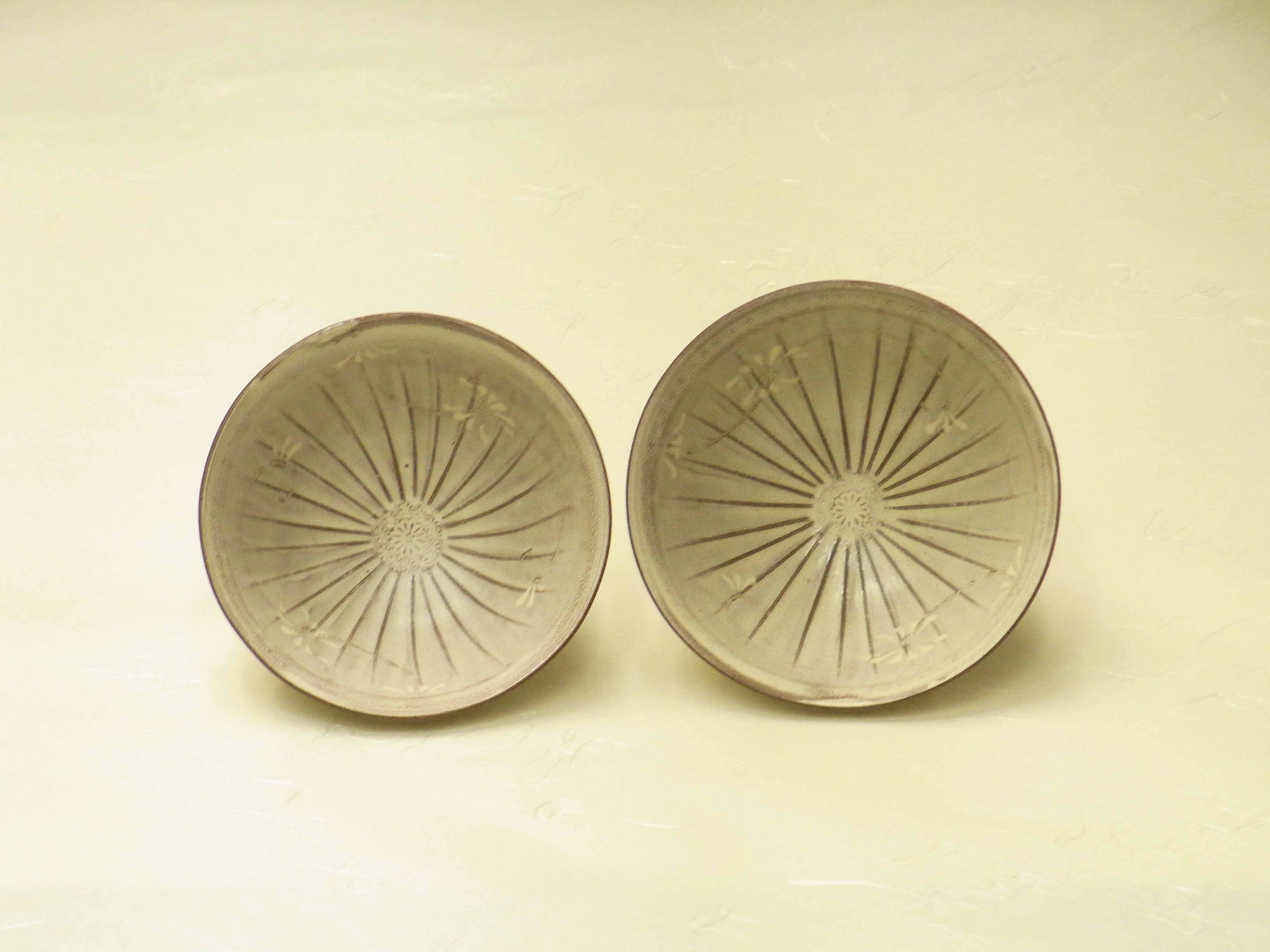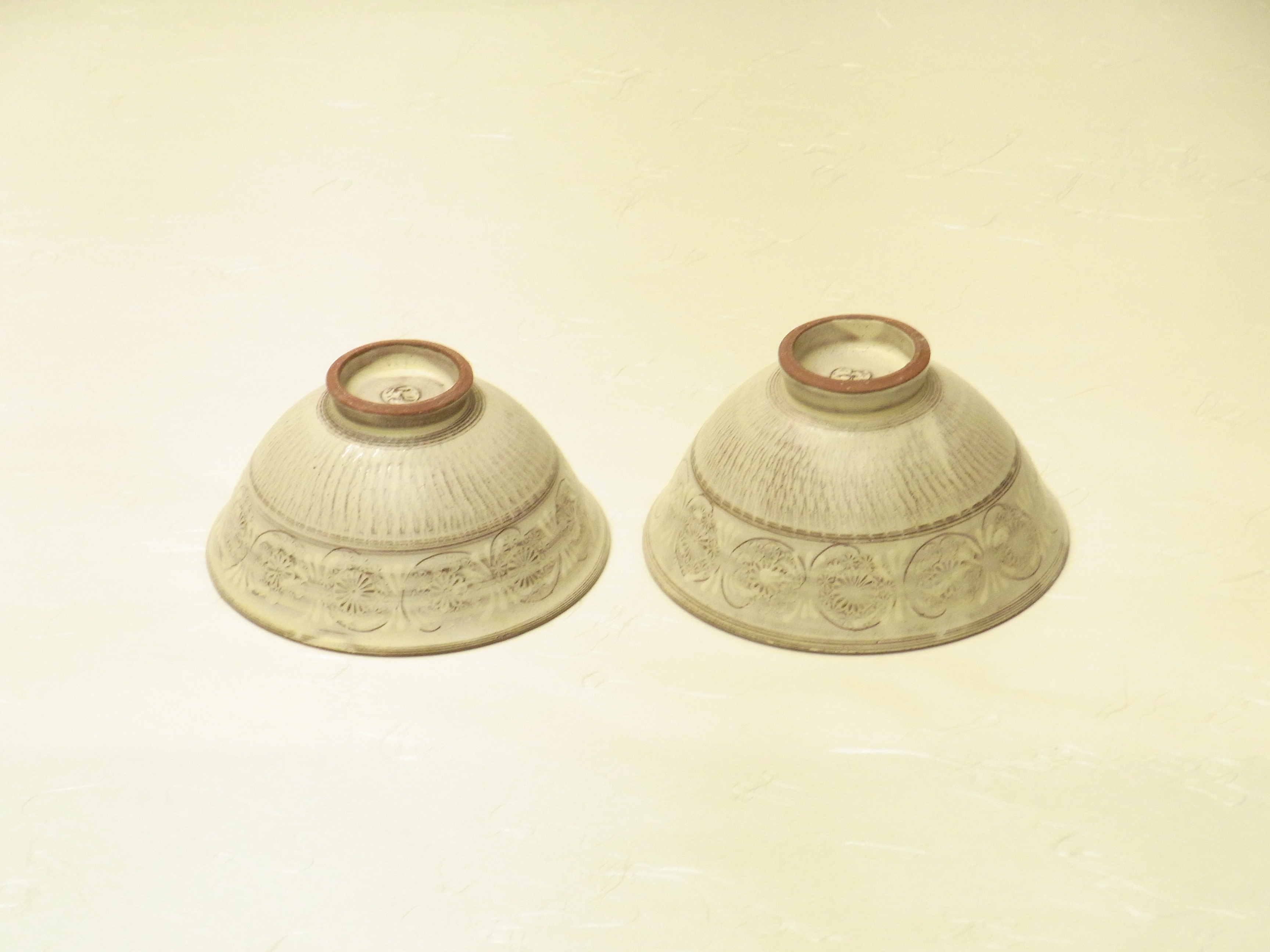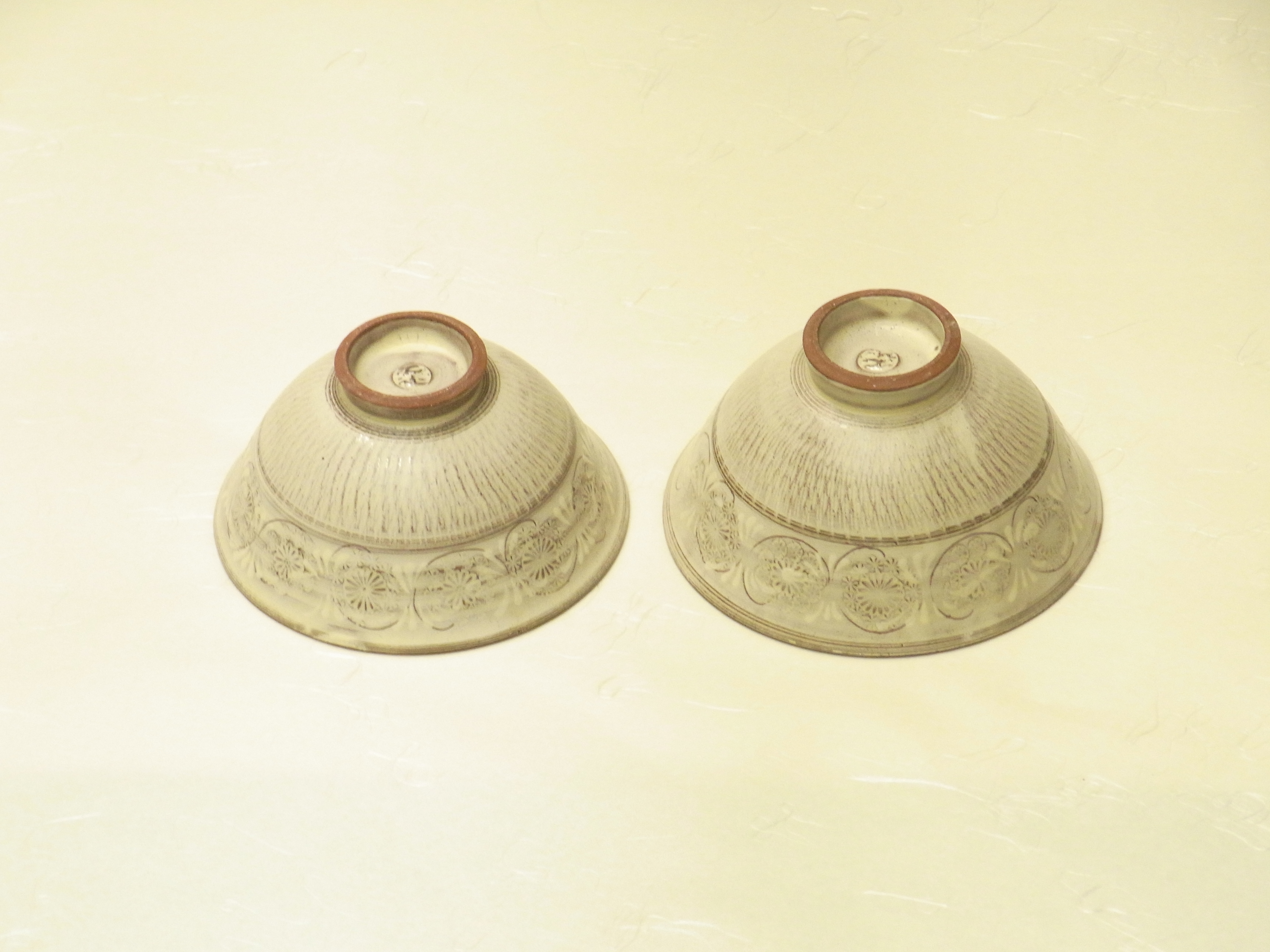清水焼から陶楽 作の三島の組飯碗(夫婦碗)のご紹介です。
印花と言われる、主に花の形をした印を飯碗の
表面に押していって模様としています。
小さい面積の中に、大変細かく、正確にたくさんの印花が押されています。
普通の三島は灰色やグレーのものが多いですが
こちらの三島は、白っぽく作られており、一見粉引のような感じがします。
外側の下半分は飛び鉋(とびかんな)「とちり」の技法が使われています。
飛び鉋とは、ろくろの上に生素地を置き、回転している素地に鉋(かんな)や
箆(へら)をあてて、素地の表面を削って模様を付ける技法です。
内側は口の部分と底に印花が押され、放射状に線が付けられており
モダンなデザインが使われています。
成形から細部のな細工まで、すべて手作業で作られており
高度な技術と大変な手間がかけられています。
茶碗 大 口径 12.4㎝ 高さ 6.5㎝
茶碗 小 口径 11.8㎝ 高さ 6㎝
It is an introduction of Mishima’s kumii-don (couple bowl) made by Kiyomizu ware.
It is said that the seal is a rice bowl, mainly in the shape of a flower.
It is pressed to the surface and it is a pattern.
In a small area, a lot of seal flowers are pressed very finely and accurately.
There are a lot of gray and gray things in the usual Mishima.
Mishima is made whitish, and at first glance it feels like a powder drawing.
The outer lower half uses the technique of “tochiri”.
A flying kite is a place on top of a potter’s wheel, and the rotating base is
It is a technique to apply a spatula, scrape the surface of the base, and apply a pattern.
On the inside, the part of the mouth and the bottom are stamped with a mark flower, and a line is attached radially.
Modern design is used.
Everything from molding to detailed workising is made by hand.
Advanced technology and a lot of effort are required.
介紹從清水燒的陶瓷作品的三島飯碗(已婚夫婦)。
被稱為印花,主要以花形的標記為飯碗
我按到表面,並做一個圖案。
在社區域,許多郵票非常精細,精確。
普通的三島有很多灰色和灰色。
三島是白色,乍一看,它看起來像一個粉狀的。
外半部分使用飛揚技術。
飛輪是把生地放在羅卡羅的地上,在旋轉的土地上。
這是一種通過應用凹板來切割原始表面並應用圖案的技術。
內部是一個標誌花在嘴的頂部和底部,並帶有一條線徑向
現代設計被使用。
從成型到細節的精心製作,都是手工製作的。
先進的技術和艱苦的工作。
介绍从清水烧的陶瓷作品的三岛饭碗(已婚夫妇)。
被称为印花,主要以花形的标记为饭碗
我按到表面,并做一个图案。
在小区域,许多邮票非常精细,精确。
普通的三岛有很多灰色和灰色。
三岛是白色,乍一看,它看起来像一个粉状的。
外半部分使用飞扬技术。
飞轮是把生地放在罗卡罗的地上,在旋转的土地上。
这是一种通过应用凹板来切割原始表面并应用图案的技术。
内部是一个标志花在嘴的顶部和底部,并带有一条线径向
现代设计被使用。
从成型到细节的精心制作,都是手工制作的。
先进的技术和艰苦的工作。
